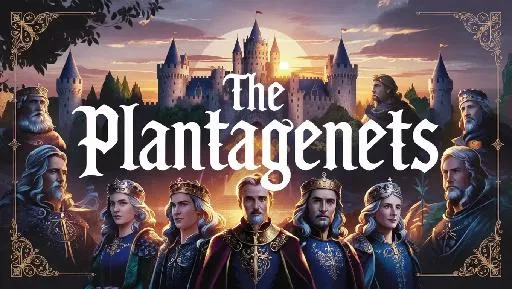Asvagosha's Ashwagosh : Revealing Buddhism's Ageless Wisdom
Asvagosha, a famous Indian Buddhist philosopher, wrote the epic poem Ashwagosh, which explores the life and teachings of Gautama Buddha. This ancient Indian classic, written in Sanskrit, contains a wealth of Buddhist philosophy, Indian culture, and spiritual enlightenment.
A Masterwork of Biographical Writing
A painstakingly written biography of the Buddha, Ashwagosh follows his path from princehood to enlightenment. Asvagosha's masterwork combines philosophical insights, mythological tales, and historical facts to provide readers a thorough grasp of Buddhism's fundamental ideas.
A masterpiece in the complex fabric of Indian literature, Ashwagosh by Asvagosha is well-known for its deep philosophical issues, nuanced character development, and examination of the human condition. In addition to being the author of this cherished work, Asvagosha—a well-known figure in classical Sanskrit literature—was also a major influence on Buddhist literature and thinking in the first millennium CE. We explore Ashwagosh's themes, characters, and historical relevance in this article to provide readers a thorough grasp of its position in literary history.
Historical Context of Ashwagosh
The era in which Asvagosha lived and wrote was marked by significant cultural and religious transformations in India. Emerging during the early centuries of the Common Era, Asvagosha was a contemporary of prominent Buddhist figures and was known for his contributions to Buddhist philosophy and literature. His works, including Ashwagosh, reflect the complexities of a society navigating the intricacies of spirituality, ethics, and morality. Understanding this historical backdrop enriches our appreciation of the text and its relevance to contemporary discussions on philosophy and spirituality.
Overview of Ashwagosh
The best way to characterize Ashwagosha by Asvagosha is as a story that combines aspects of morality, spirituality, and human experience. The title itself, which translates to "the horse's roar," represents power, vitality, and the quest for knowledge. The story illustrates the struggles and victories encountered by those in search of greater knowledge, acting as a metaphor for the spiritual path.
Key Themes in Ashwagosh
Spiritual Enlightenment At the heart of Ashwagosh is the quest for spiritual enlightenment. Asvagosha explores the nature of suffering and the paths to transcendence, inviting readers to reflect on their own spiritual journeys. This theme resonates with individuals seeking deeper meaning in their lives, making it particularly relevant in today's fast-paced world.
Morality and Ethics The narrative presents a rich tapestry of moral dilemmas faced by the characters. Asvagosha delves into the nuances of right and wrong, encouraging readers to consider the implications of their choices. This exploration of ethics provides valuable insights into the human condition and the importance of moral integrity.
The Nature of Reality Another significant theme in Ashwagosh is the exploration of reality and illusion. Asvagosha invites readers to question their perceptions of the world, challenging them to discern between the transient and the eternal. This philosophical inquiry fosters a deeper understanding of the nature of existence and encourages mindfulness in daily life.
The Role of Desire Desire is portrayed as a double-edged sword within the narrative. While it can drive individuals toward greatness, it also serves as a source of suffering. Asvagosha's nuanced portrayal of desire prompts readers to reflect on their own aspirations and the potential consequences of unchecked ambition.
Analysis of Characters in Ashwagosh
A wide range of characters, each reflecting a distinct facet of the human experience, are included in Ashwagosh by Asvagosha.
The main character The protagonist, who battles both social expectations and personal hardships, represents the path to enlightenment. Readers see the development of character and the transformational potential of self-discovery via their struggles and victories.
The Mentor The protagonist's path is illuminated by the wise mentor role introduced by Asvagosha. This character offers insightful guidance on negotiating life's intricacies and is a representation of experience and wisdom.
Opposing Forces The narrative gains depth when competing forces, both internal and external, are present. These difficulties increase the story's relatability by reflecting the common difficulties people encounter on their travels.
The main character The protagonist, who battles both social expectations and personal hardships, represents the path to enlightenment. Readers see the development of character and the transformational potential of self-discovery via their struggles and victories.
The Mentor The protagonist's path is illuminated by the wise mentor role introduced by Asvagosha. This character offers insightful guidance on negotiating life's intricacies and is a representation of experience and wisdom.
Opposing Forces The narrative gains depth when competing forces, both internal and external, are present. These difficulties increase the story's relatability by reflecting the common difficulties people encounter on their travels.
Literary Style and Methods
Asvagosha's mastery of language, symbolism, and narrative structure all demonstrate his literary talent. Ashwagosh's use of vivid images and metaphors transports readers to the world he has created, making for an engaging read. The narrative's profundity is further increased by the use of allegory, which permits several readings and contemplations.
Legacy and Cultural Impact
Asvagosha's ashwagosh has permanently altered India's and other countries' cultural landscapes. Its themes appeal to readers of all ages and encourage reflection and philosophical discussion. The work has inspired people to look for a deeper understanding of who they are and where they fit in the universe, and it has influenced spiritual practices as well as literature.
In conclusion
To sum up, Ashwagosh by Asvagosha is proof of the timeless ability of writing to uplift, provoke thought, and effect change. This work encourages readers to set out on their own paths of self-discovery and enlightenment with its deep philosophical questions, captivating characters, and rich topics. Asvagosha's legacy endures, serving as a constant reminder of the everlasting value of his teachings and the necessity of pursuing more profound truths in our life.











.png)










